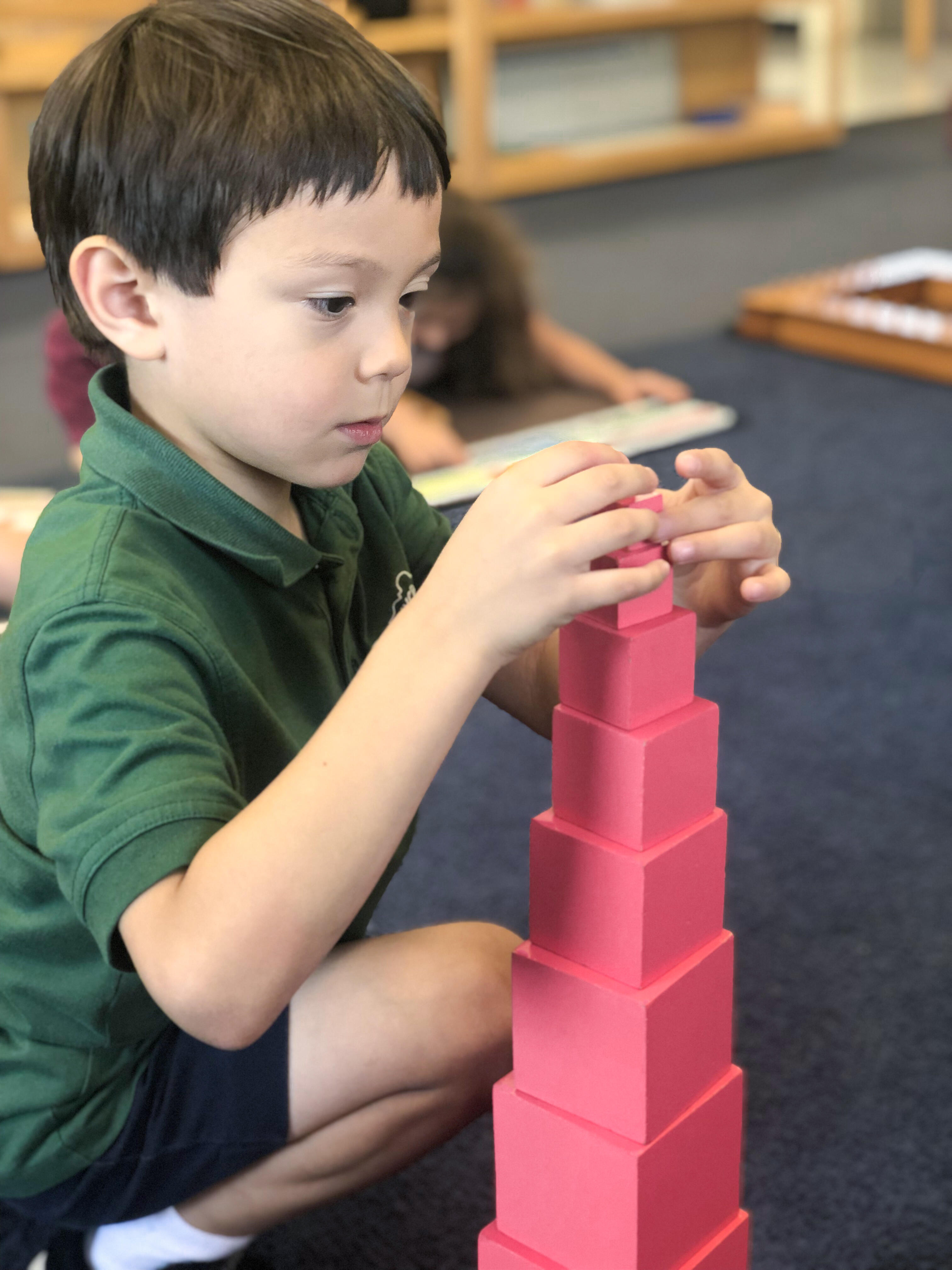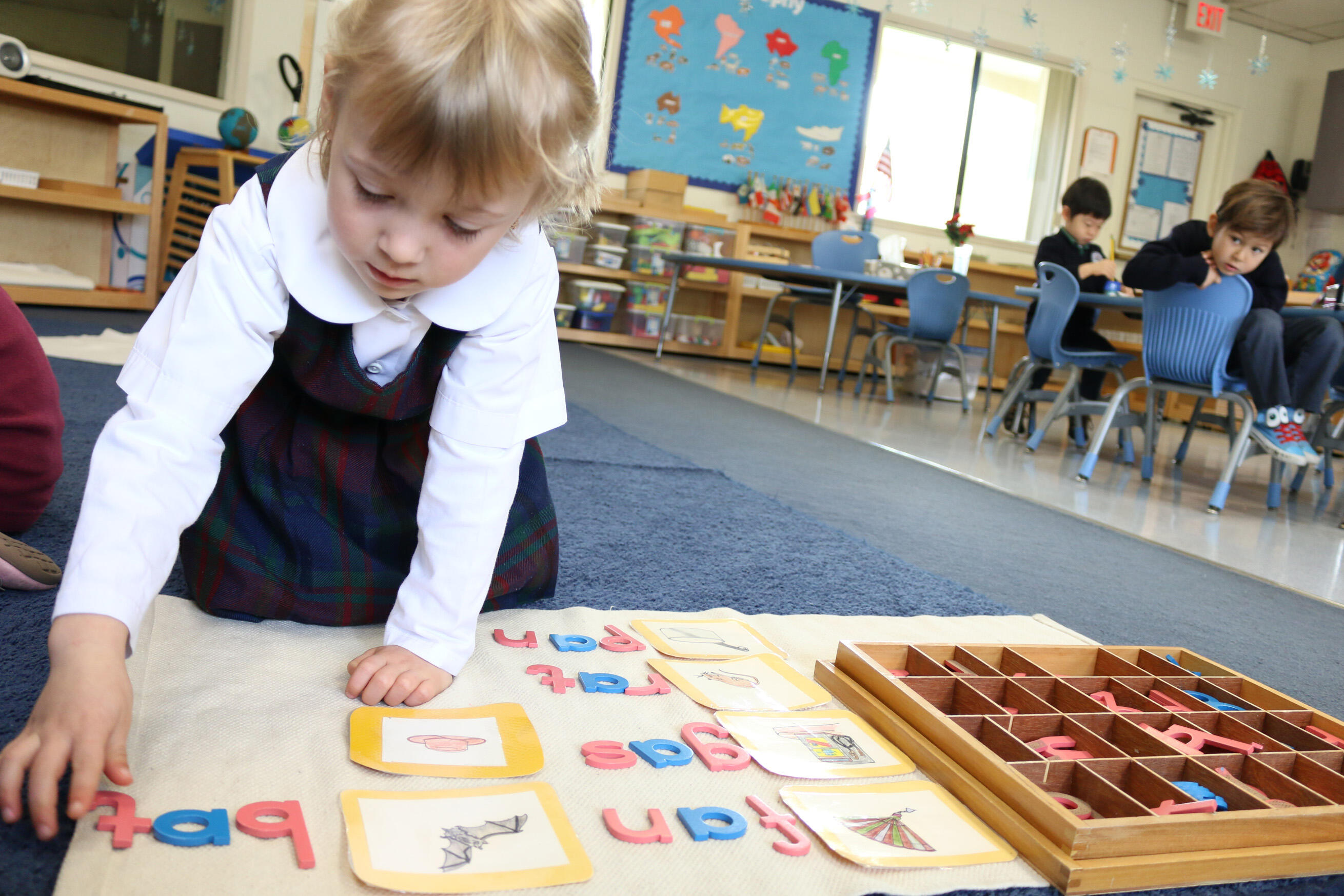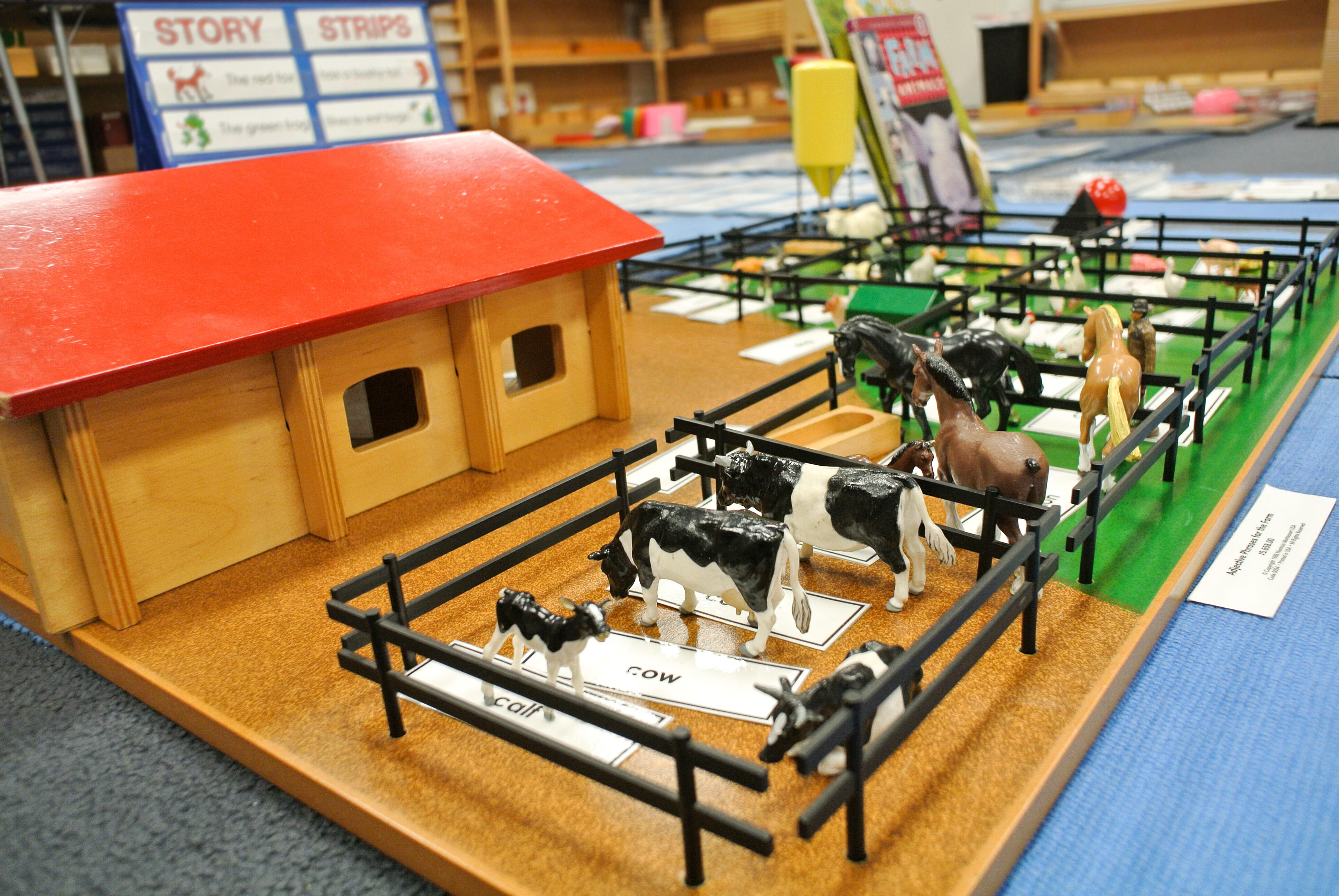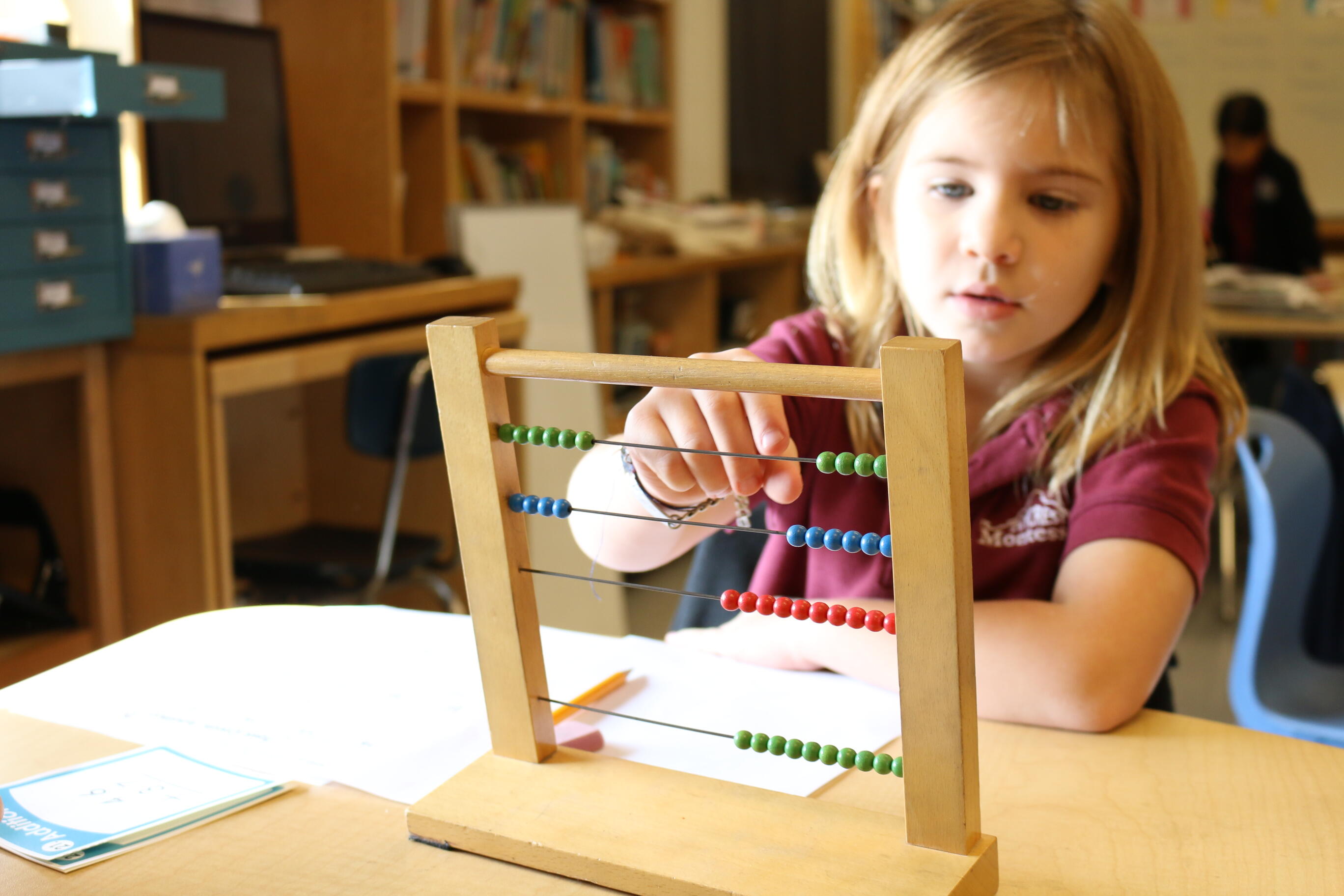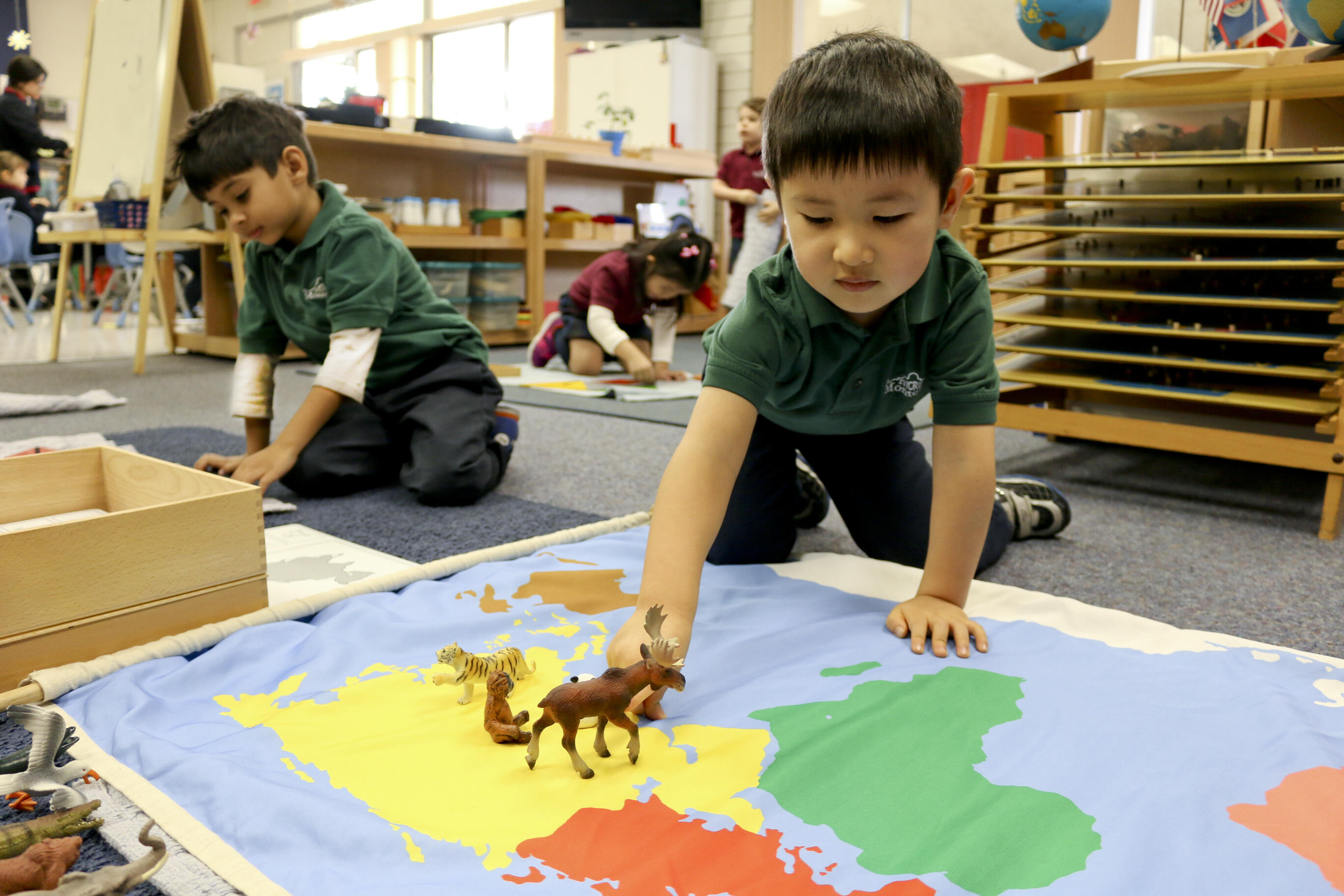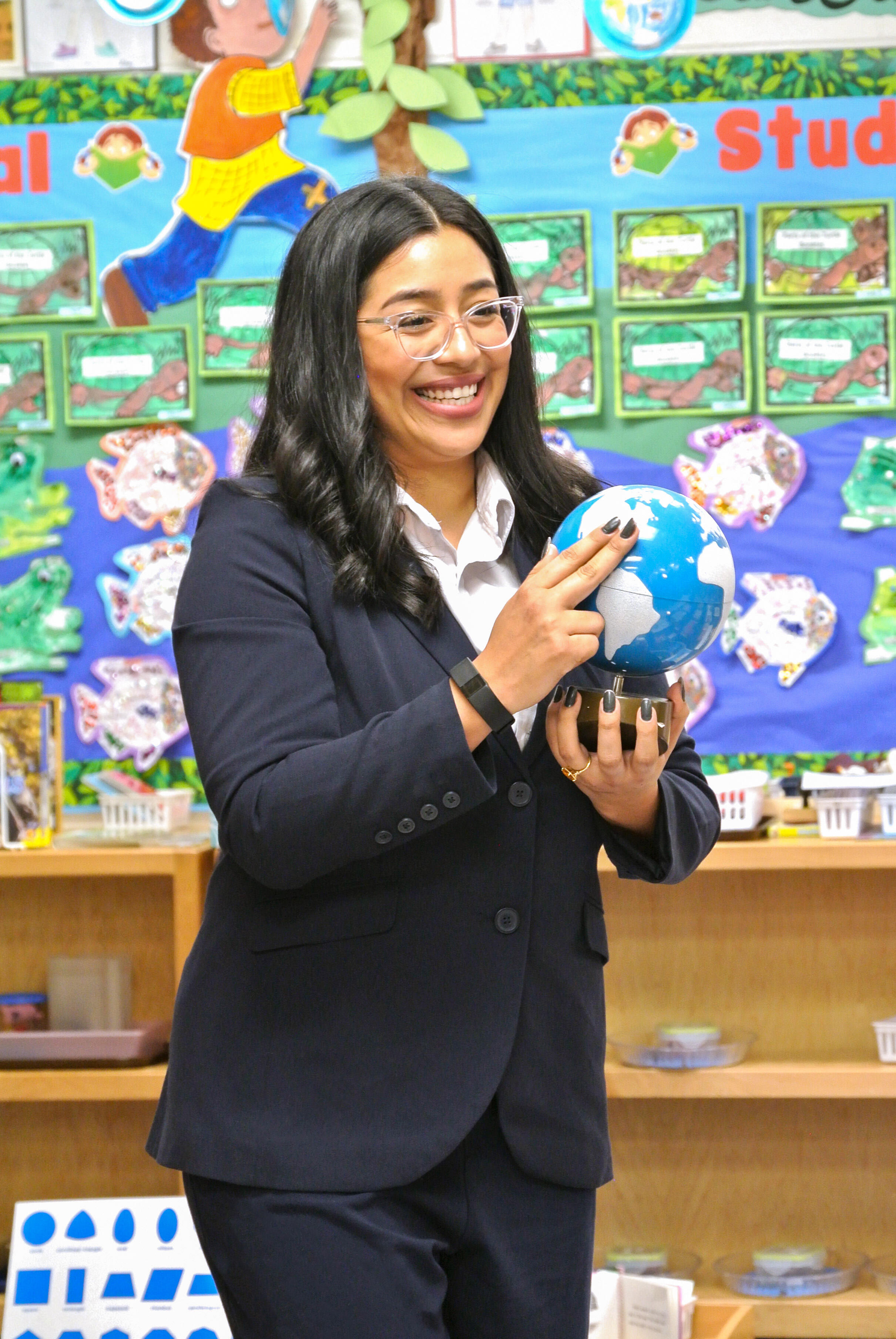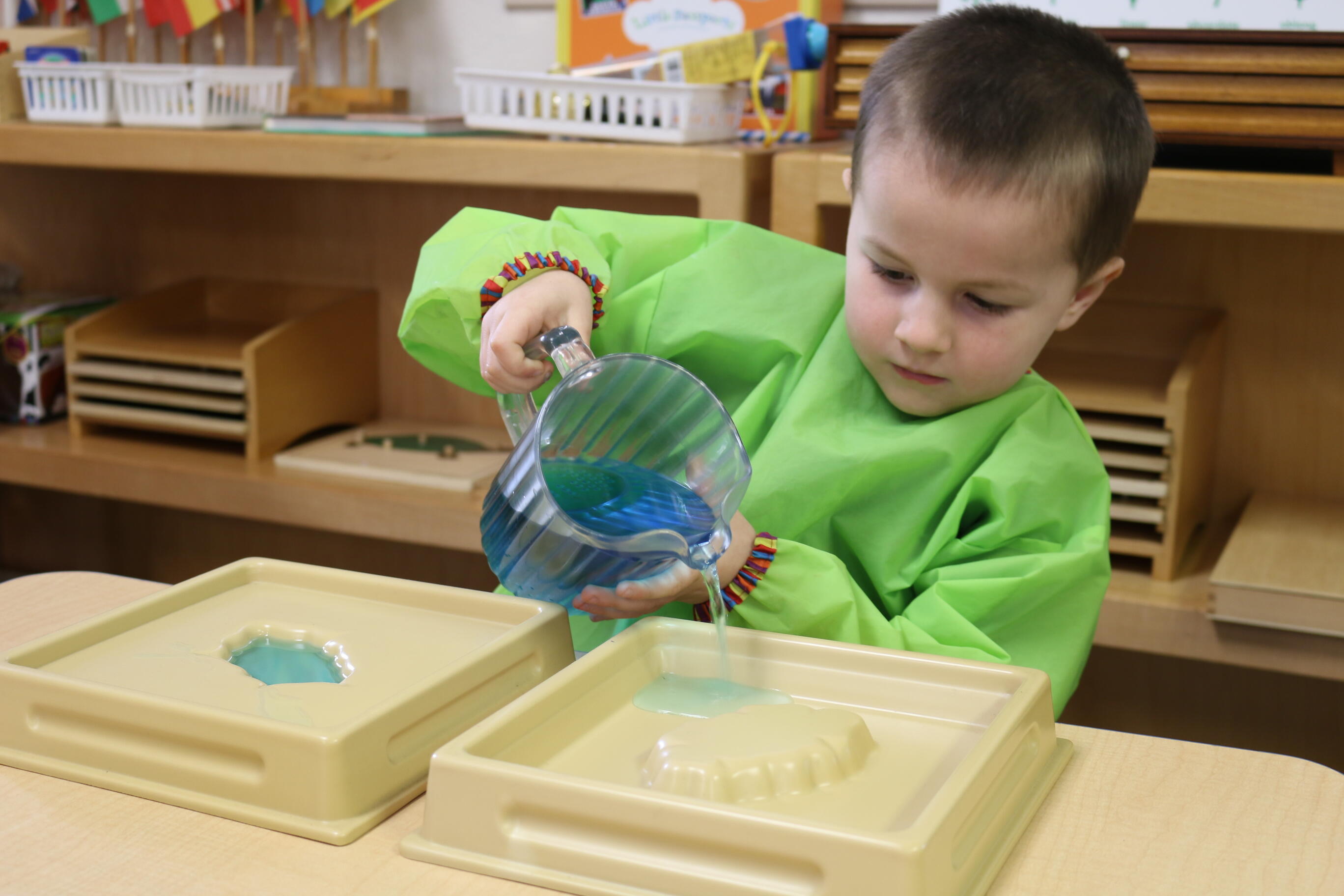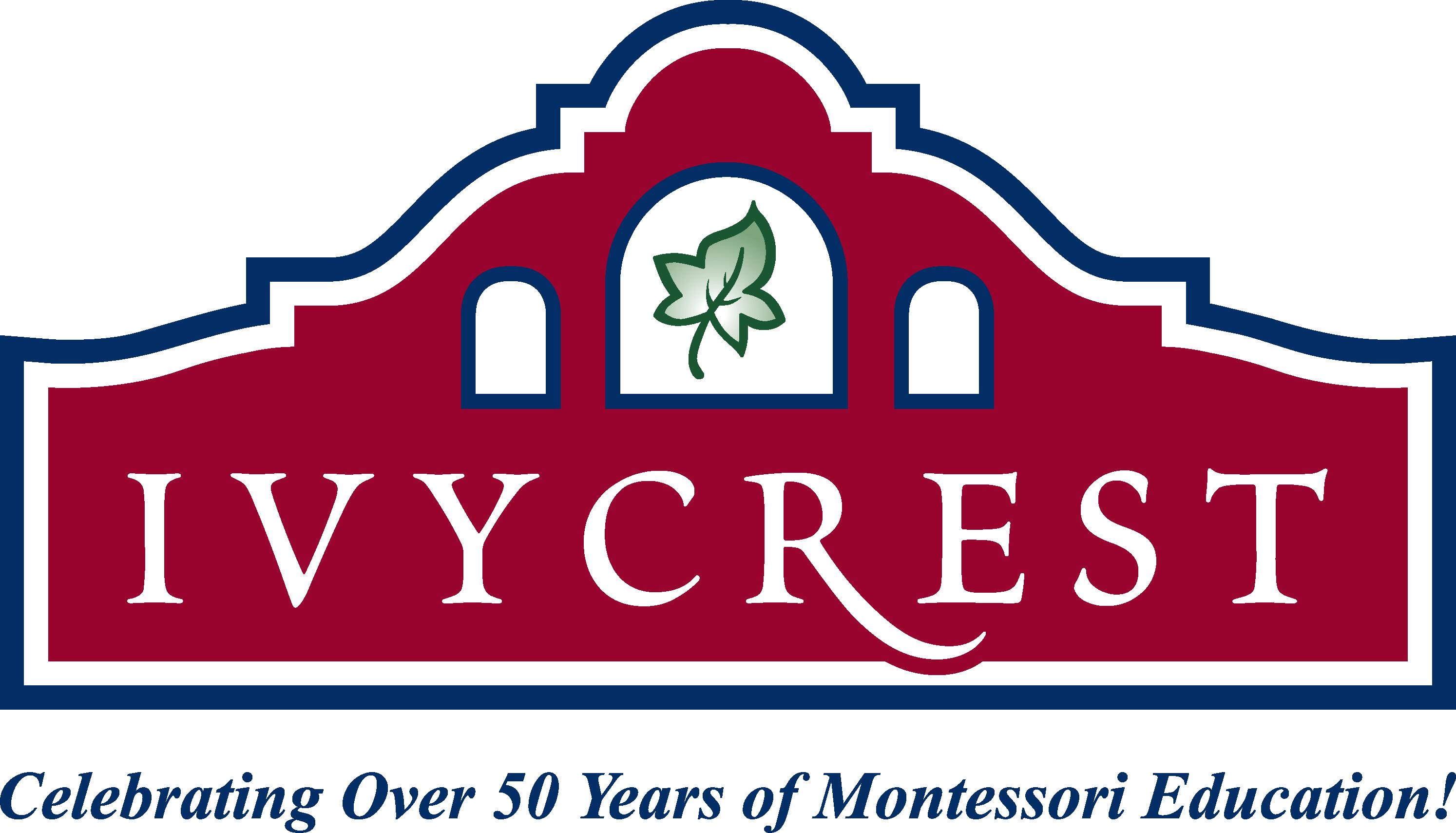Primary Academics
Primary Program (ages 3 to 6 years)
Children reach a stage in which repetition and manipulation of the environment are critical to the development of concentration, coordination, independence, and a sense of order. The child learns the skills of everyday living – sorting, grading, and classifying – all of which leads to development of writing, reading, and a mathematical mind.
Practical Life:
Activities include sweeping, pouring, polishing, care of one's self (independence, dressing frames), food preparation and dish washing, as well as basic exercises of grace and courtesy. Through these exercises, children develop muscular coordination, enabling movement and exploration of their surroundings, concentration, and the persistence to complete a cycle of work. Children enjoy choosing and performing these new and exciting activities, lengthening their attention span and developing concentration as they work with them repeatedly. The exercises instill a respect for self, for others, and the environment.
Sensorial:
Refines sense perception and basic spatial and dimensional relationships. Children build cognitive skills and by using self-correcting materials how to order and classify impressions by touch, sight, smell, taste, sound, and exploring the physical properties of the environment. The Montessori materials utilized include knobbed cylinders, brown stairs, pink towers, geometric solids, geometric cabinet, constructive triangles, color boxes, and more.
Language:
Tactile sandpaper letters introduce the children to letter shapes and phonics, and lead them naturally to read and spell. The scope of work includes three letter phonetic words, phonograms, sentences, and paragraphs, utilizing a series of materials such as the movable alphabet, command cards, and nomenclature cards. Language development is vital to human development, and the Montessori environment is rich in oral language opportunities that allow the children to experience conversation, stories, and poetry.
Mathematics:
Concrete mathematical concepts are introduced with a variety of materials that enable the child to understand numbers, quantities, and symbols as well as comprehending numbers as a decimal system. Children begin to learn 1 through 100, work with number rods, sandpaper numbers, spindle boxes, cards and counters, and sequin boards. Later, the concept of basic operations such as addition, subtraction, multiplication, and division are introduced using decimal materials where the children focus on place values of units, tens, hundreds, and thousands.
Botany & Zoology:
Activities provide more vocabulary enrichment opportunities for students as they explore the plant and animal kingdoms. Their introduction to these realms begins with recognition and naming of common plants and animals in their own environment, eventually moving on to encompass other continents of the world. Subsequently, the children learn about different vertebrates: fish, amphibians, reptiles, birds and mammals. Trees, plants, flowers and their various parts are examined, and children learn to start caring for plants and animals.
History & Geography:
The concept of time is presented by studying the days of the week, months of the year, the calendar, and a child's personal timeline. The children are presented with the sandpaper and colored globes as introductory lessons to the study of the earth. After studying land and water forms, they progress to puzzle maps of our continents and countries, studying North America, South America, Europe, Asia, Africa, Australia and Antarctica. They will then study the flags of the world.
.JPG?mask=1)
